Don't wanna be here? Send us removal request.
Text
Artwork Bibliography
Bourdieu, Pierre. “Fiches d'Algérie.” 2001. Collection of Bourdieu’s notes from his fieldwork in Algeria. Camera Austria. Graz.
Chhim, Sothy. The Arunreas Collection. 2006 - 2015. Mixed media. Arunreas Hotel. Phnom Penh. https://www.arunreas.com/images/blog/FA-CHHIM-SOTHY.pdf.
Em, Reim. “PAINTIGN & SCULPTUER.” Em Reim. February 22, 2010. Accessed September 26, 2019, http://em-riem.blogspot.com/.
Hak, Kim. Unity. 2012 - 2013. Photograph series. Phnom Penh. http://www.kimhak.com/stories/unity/.
Hak, Kim. Alive. 2014 - present. Photograph series. Object Space. Auckland. http://www.kimhak.com/stories/alives/.
Suh, Do Ho. Bathtub. 2013. Apartment A, 348 West 22nd Street. New York.
Suh, Do Ho. Rubbing/Loving Project. 2013-2014. Apartment A, 348 West 22nd Street. New York.
Suh, Se Ok. Fishing In The River With Pine Tree. mid 20th century. Ink and colour on paper. Kang Collection. California. http://www.kangcollection.com/paintings/suh-se-ok-sanjeong-seoseog-1929.
Suh, Se Ok. People. 1990s. Ink on mulberry paper. Lehmann Maupin. New York and Hong Kong, and Gallery Hyundai, Seoul. https://www.lehmannmaupin.com/artists/suh-se-ok.
Vandy, Rattana. Bomb Ponds. Cambodia. 2009. Photograph series. Galerie Chateau d'Eau. Toulouse. http://vandyrattana.com/project/bomb-ponds-2009/.
Vandy, Rattana. “Funeral (excerpt).” Vandy Rattana. Accessed September 23, 2019. http://vandyrattana.com/video/funeral.
0 notes
Text
Readings Bibliography
Alpuerto, Agnes and Say Tola. “Multitalented artist Em Riem urges Cambodians to remember that less is more.” Khmer Times. March 2, 2018. Accessed September 11, 2019, https://www.khmertimeskh.com/111291/multitalented-artist-em-riem-urges-cambodians-remember-less/.
Artnow. “Alive: Kim Hak.” Artnow. Accessed September 23, 2019, https://artnow.nz/exhibitions/alive-kim-hak.
Cotter, Holland. “Acquired Tastes of Asian Art.” The New York Times. February 21, 2013. Accessed June 8, 2019, https://www.nytimes.com/2013/02/22/arts/design/no-country-new-asian-art-at-the-guggenheim.html.
“Digital Storytelling and Cambodian History.” Object Space. Accessed September 20, 2019, http://www.objectspace.org.nz/events/digital-storytelling-and-cambodian-history/.
Ellen, Rosa. “Light and shadow: The colourful life of Em Riem.” Phnom Penh Post. March 15, 2013. Accessed August 28, 2019, https://www.phnompenhpost.com/7days/light-and-shadow-colourful-life-em-riem.
Marissa. “11 Cambodian Contemporary Artists You Should Know.” The Culture Trip. July 11, 2018. Accessed August 8, 2019, https://theculturetrip.com/asia/cambodia/articles/10-contemporary-artists-from-cambodia-you-need-to-know/.
Morelli, Naima. “Vandy Rattana - Can Time Cure All the Atrocities?” Cobosocial. March 21, 2018. Accessed September 22, 2019, https://www.cobosocial.com/dossiers/vandy-rattana-can-time-cure/.
Ota, Emma. “Vandy Rattana – Speaking of Something More.” Tokyo Art Beat. August 28, 2015. Accessed September 24, 2019, http://www.tokyoartbeat.com/tablog/entries.en/2015/08/vandy-rattana-speaking-of-something-more.html.
“Pierre Bourdieu: The Archive.” Camera Austria. 2015. Accessed August 21, 2019, https://camera-austria.at/en/pierre-bourdieu/pierre-bourdieu-the-archive/.
Roots. “Funeral.” Roots. Accessed September 28, 2019, https://roots.sg/Roots/learn/collections/listing/1413585.
Singapore Art Museum. “Bomb Ponds.” Singapore Art Museum. Accessed September 23, 2019, https://www.singaporeartmuseum.sg/about/our-collection/the-bomb-ponds.
Sunjolinet, Bora and Alessandro Marazzi Sassoon. “My Phnom Penh: Em Riem, artist.” Phnom Penh Post. August 4, 2016. Accessed August 29, 2019, https://www.phnompenhpost.com/post-weekend/my-phnom-penh-em-riem-artist.
White, Mike. “How photographer Kim Hak captured Cambodian survival stories.” Noted. June 14, 2019. Accessed September 26, 2019, https://www.noted.co.nz/culture/culture-arts/kim-hak-alive-exhibition-cambodian-survival-stories.
0 notes
Photo

Pierre Bourdieu, “Fiches d'Algérie”, 2001, Collection of Bourdieu’s notes from his fieldwork in Algeria, Camera Austria, Graz.
The photographic documents by Pierre Bourdieu are above all the result of scientific work, and in this sense they must be viewed in a constructive context together with the texts that he wrote at the same time, and thus have a specific historical and thematic framework. The first task in our work, then, was to scrutinise the photographic documentations for contexts that Pierre Bourdieu analyses in his writings. We attempted to read Pierre Bourdieu’s archive and all of the circumstances of this collection of negatives and prints, comments and the collection of sketches contained in the “fiches d’Algerie” (collection of notes from Algeria), in the context of Bourdieu’s studies. Pierre Bourdieu himself had already begun to tentatively combine pictures and texts, and we were able to follow this model.
“Pierre Bourdieu: The Archive,” Camera Austria, last modified 2015, accessed August 21, 2019, https://camera-austria.at/en/pierre-bourdieu/pierre-bourdieu-the-archive/.
1 note
·
View note
Photo




Em Reim, “PAINTIGN & SCULPTUER,” Em Reim, February 22, 2010, accessed September 26, 2019, http://em-riem.blogspot.com/.
“A lot changed for me. In school here, it was very academic: we respected mostly the traditional Angkor Wat style, traditional painting . . . it was very realist. And then in France, we respected concepts and ideas and then technique,” he says. “It felt very different because here I drew portraits – that was my specialty. They were very nice, with their skin tone and with their colour.”
In 2003, while still in France, Riem again turned his hand to realism and began his portrait series on the ‘memory of genocide’of the Khmer Rouge, which he lived through as a child. Although his official age – and the one on his Facebook page – says he was born in 1977, Riem was in fact born six years earlier. The story of his age change is a common one, he explains, and came after years living in fear under the Khmer Rouge.
“My real age is 42. In my passport it says 36 because after the Khmer Rouge, when the (Vietnamese) communists came, my mother changed [my age] because if she didn’t, you could be forced to go with the millitaire [to fight the Khmer Rouge]…My mother changed my age because if the police took you when you walked to school you could show ID, that proved you were underage for joining.
Everybody changed their age!” In April 1975, when he was four years old, his family joined thousands of others from where they lived in Kandal and were forced to move, in crushing numbers, into the countryside. Somewhere along the way, Riem’s eldest brother – a teenager – was lost in the swelling crowds. They never found him.
The family were sent to Battambang, where his parents and five siblings were put to work in different areas. Riem worked with other small children, finding wild leaves to mix with cow dung to make cakes of fuel. At night, he would meet up with his parents for dinner in a communal canteen, where they were given water, some rice and salt to eat.
“When you went to sleep you couldn’t speak together or as a family, because the Khmer Rouge cadre were downstairs of your house,” he remembers.” ‘What did you say? What did you want to say?’ they’d say. There was no speaking or talking…If you spoke, the soldier would cough loudly. You had to sleep.”
“Some artists don’t [venture] very far – they stay in the Khmer style, like the [illustrative]Toul Slang style,” he says. ”I’m also talking about the Khmer Rouge, and my work is realist, but my technique - black and white, on rice bag, the numbers…. the technique is more contemporary.”
Rosa Ellen, “Light and shadow: The colourful life of Em Riem,” Phnom Penh Post, March 15, 2013, accessed August 28, 2019, https://www.phnompenhpost.com/7days/light-and-shadow-colourful-life-em-riem.
Bora Sunjolinet and Alessandro Marazzi Sassoon, “My Phnom Penh: Em Riem, artist,” Phnom Penh Post, August 4, 2016, 2019, accessed August 29, https://www.phnompenhpost.com/post-weekend/my-phnom-penh-em-riem-artist.
Agnes Alpuerto and Say Tola, “Multitalented artist Em Riem urges Cambodians to remember that less is more,” Khmer Times, March 2, 2018, accessed September 11, 2019, https://www.khmertimeskh.com/111291/multitalented-artist-em-riem-urges-cambodians-remember-less/.
1 note
·
View note
Photo






Chhim Sothy, The Arunreas Collection, 2006 - 2015, Mixed media, Arunreas Hotel, Phnom Penh, https://www.arunreas.com/images/blog/FA-CHHIM-SOTHY.pdf.
1 note
·
View note
Photo
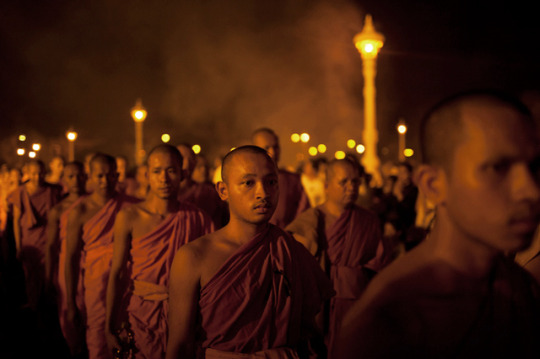
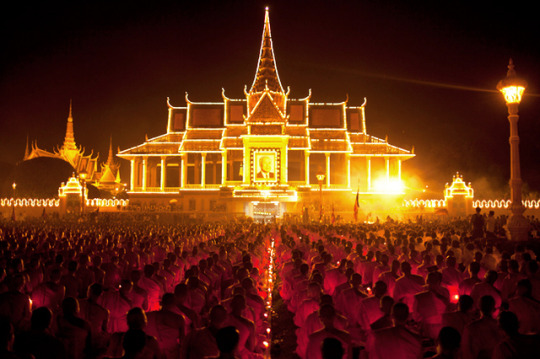
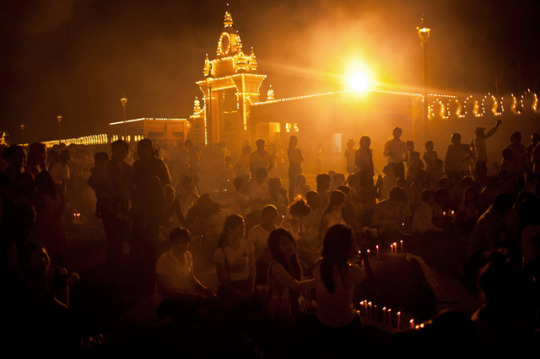
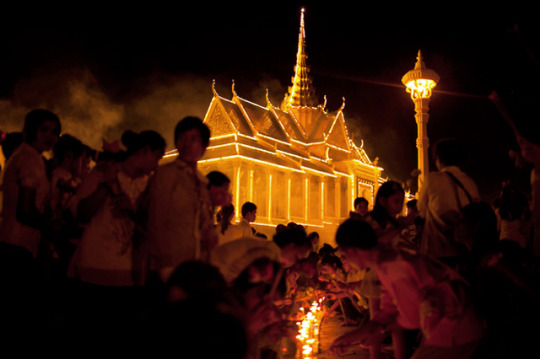

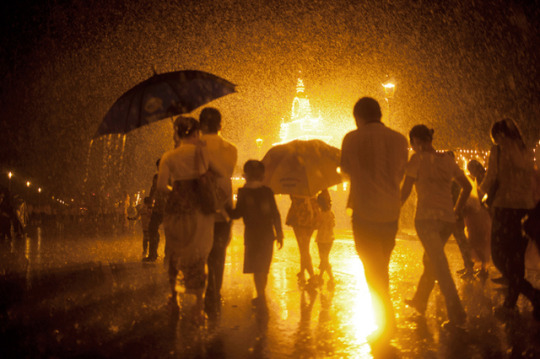

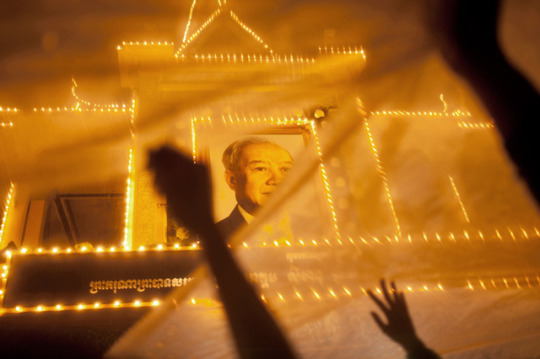

Kim Hak, Unity, 2012 - 2013, Photograph series, Phnom Penh, http://www.kimhak.com/stories/unity/.
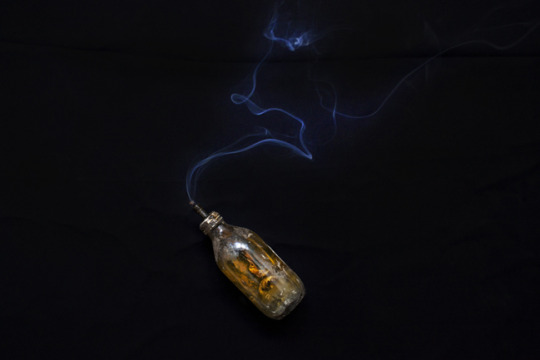
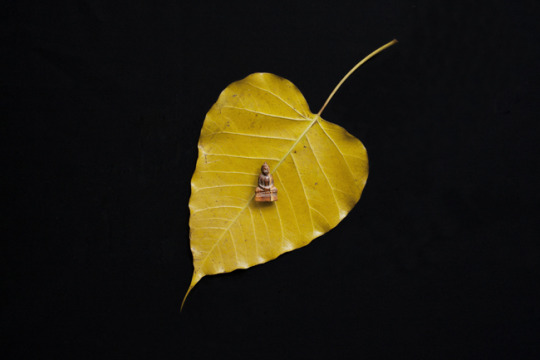
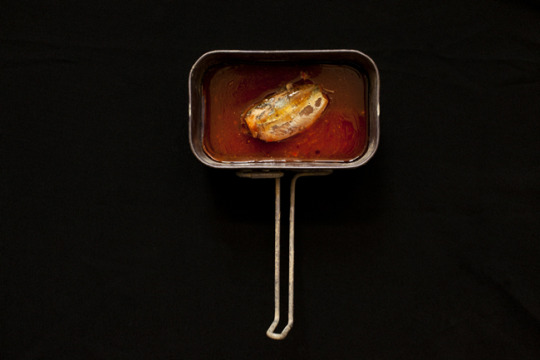
Kim Hak, Alive, 2014 - present, Photograph series, Object Space, Auckland, http://www.kimhak.com/stories/alives/.
I attended this exhibition at Objectspace when it was hosting a talk with the director of Bophana where they talk about an app that they had developed with the purpose of educating young Cambodians about Khmer Rouge history. It is aimed for academic use with referencing and has been very useful for me.
“The director of the Bophana Center, Sopheap Chea, will visit Objectspace to share the learnings and complexities of gathering such diverse and personal content when creating an online app.
Sopheap Chea is the executive director of the Bophana Audiovisual Resource Center and a project manager for the Khmer Rouge app project. He has worked with the Bophana Center for more than a decade. Sopheap holds a critical view of knowledge-sharing in the digital era, having worked on the Khmer Rouge History app with limited information available to him and the added challenge of recognising valid sources.”
“Digital Storytelling and Cambodian History,” Object Space, Accessed September 20, 2019, http://www.objectspace.org.nz/events/digital-storytelling-and-cambodian-history/.
The things they brought with them usually related to the life they’d previously led, or are items of great sentimentality. There is the watch one man had been given by his father when he graduated high school – that he kept hidden during the Khmer Rouge time, and still wears today. One woman secreted the negative of a portrait taken of her when younger; when she arrived in Auckland, she had a print made from it. Another man still has the hammock he used as a soldier during the war. Another, who was a hospital nurse, has a pair of surgical scissors he took as the Khmer Rouge invaded, and his wife has a pair of forceps – objects they used to help others. The same man has kept a necklace he made while in a refugee camp.
Man Hau Liev was born in 1952 in Siem Reap, Cambodia. He now lives in South Auckland. The watch was a gift from his father when he left to study at university in Phnom Penh. In the early 70s, with political unrest in the city growing, Man Hau sent the watch back to his mother for safekeeping. She kept it hidden throughout the Khmer Rouge regime. Man Hau bought a replacement watch, which he later gave to a Khmer Rouge soldier to save himself from execution. In 1982, he was reunited with his mother, and the watch, in a refugee camp. He was accepted as a refugee to New Zealand soon after.
Maran Keo was born in 1957 in Phnom Penh, and now lives in Auckland. Towards the end of the Khmer Rouge regime, Maran fled to refugee camps in Thailand and then Malaysia. She met her husband in one of the Thai camps and they had three children while living as refugees. In 1985, a friend who had been granted asylum in Canada gave her the soup pot. When Maran and her family were taken in by New Zealand, she packed her clothes inside the pot and brought it to their new home in a rice bag. She lost contact with her friend from the camp, but says the soup pot is her reminder of friendship and kindness in difficult times.
Mike White, “How photographer Kim Hak captured Cambodian survival stories”, Noted, June 14, 2019, accessed September 26, 2019, https://www.noted.co.nz/culture/culture-arts/kim-hak-alive-exhibition-cambodian-survival-stories.
0 notes
Photo



Vandy Rattana, Bomb Ponds, Cambodia, 2009, Photograph series, Galerie Chateau d'Eau, Toulouse, http://vandyrattana.com/project/bomb-ponds-2009/.
These tranquil, almost nondescript bodies of water are known as ‘bomb ponds’ in the Khmer language: craters created when the Americans dropped close to three million tons of bombs across politically neutral Cambodia during the Vietnam War. Despite the damage, injury and deaths inflicted onto Cambodian civilians who had no knowledge of the war being waged by governments, the bombings were not formally acknowledged for years. Like a dark secret kept hidden in plain view, the ponds remain officially invisible, yet are searing, visible reminders to the civilians who lost family and loved ones.
Singapore Art Museum, “Bomb Ponds”, Singapore Art Museum, accessed September 23, 2019, https://www.singaporeartmuseum.sg/about/our-collection/the-bomb-ponds.
vimeo
Jeu de Paume / Magazine, “VANDY RATTANA, MONOLOGUE”, video, March 24, 2015, https://vimeo.com/123078294.
vimeo
Vandy Rattana, “Funeral (excerpt)”, Vandy Rattana, accessed September 23, 2019, http://vandyrattana.com/video/funeral.

St Paul St, “MONOLOGUE transcript”, AUT, accessed September 23, 2019,
https://stpaulst.aut.ac.nz/__data/assets/pdf_file/0004/9742/Vandy-Rattana_monologue-translation.pdf
You are now based in Taiwan but is your work still contextualized within the environment of Cambodia? I was in Cambodia for nearly 30 years, then the opportunity came to leave and I had to say “Yes.” Now I am based in Taiwan but may move again. But at the moment it is good to be able to go back and forward between Taiwan and Cambodia. Although I am based outside the country itself, most of my work centers upon Cambodia. Some artists try to make art abroad but for me it’s too opportunistic. I carry enough of the Cambodian story within my own life. It’s already complicated enough. Having said that, my work is not about Cambodia – it’s about human nature – it’s touching upon something really primitive.
Your work is strongly connected to the history of Cambodia, yet it is universal, something which speaks to each individual. Many artists frame their work through Cambodia’s traumatic past but it’s not necessary to reference the Khmer Rouge anymore in this way. It is already a given. The presence is everywhere. But what is the Khmer Rouge? We can not put our finger on that. It is something which haunts you. Something you constantly carry with you.
By the very nature of photography, your presence is essential in the act of taking the photograph. How do you approach or tackle this in the work? It’s very subjective, you invent a new reality. But I try to leave an objective atmosphere which allows people to enter into the work. I try not to frame things too much. When I worked with a newspaper as a photo journalist they always cut the image. Always exacting the truth. It made me very angry. In Bomb Ponds, for example, I don’t try to find a unique angle. I just take the shot from the stretch of road people usually pass by, a view which most people would see, and I avoid going into the rice field and taking the image from an “alien” angle. The first thing you have to learn in photography is that as soon as you look through the view finder you already destroy the reality.
Emma Ota, “Vandy Rattana – Speaking of Something More”, Tokyo Art Beat, August 28, 2015, accessed September 24, 2019, http://www.tokyoartbeat.com/tablog/entries.en/2015/08/vandy-rattana-speaking-of-something-more.html.
Culture is the physical expression of the way people think. In this sense, artist Vandy Rattana doesn’t see a huge difference between the particular shape religion and mythology express themselves in Cambodia, and the art scene: “We have a lot of myths in Cambodia, where problems are always fixed by divine intervention. It’s the same in the artcommunity, where we don’t come together to have discussion about life or what we are doing because Cambodians do not take criticism.”
“For hundred of years part the Cambodian mentality didn’t comprise mutual understanding and was geared towards going to the neighbouring country for help whenever there is a problem,” says Rattana. “We have a long history of this behaviour. Sometimes we looked to Thailand for help, other times to Vietnam or France. Now we look to China. We never tried to help ourselves. It’s steeped in our mentality.”
The lack of community is to Vandy one of the main obstacles hindering the growth of the local art scene. “We don’t have a sense of freedom in common. In Cambodia I tried to do my part in making people engage in conversations, but after a few years I gave up and walked away of everything.”
Since an entire generation of artists, intellectual and cultural figures was wiped out by the Khmer Rouge, the art scene is today very much in the process of being built from the ground up. “There are very few artists in Cambodia, so if you do one painting you are already considered as an artist. I had a friend who once bought a photograph and called himself a collector. That is not serious for me! I’m not interested to be part of that and taking advantage of being from Cambodia. It has no meaning for me.”
Naima Morelli, “Vandy Rattana - Can Time Cure All the Atrocities?”, Cobosocial, March 21, 2018, https://www.cobosocial.com/dossiers/vandy-rattana-can-time-cure/.
1 note
·
View note
Photo






2019
Olympus µ[mju:]-II Zoom
Fujicolor Superia X-TRA 400
1 note
·
View note
Video
youtube
The Deserter, 2019
1 note
·
View note


